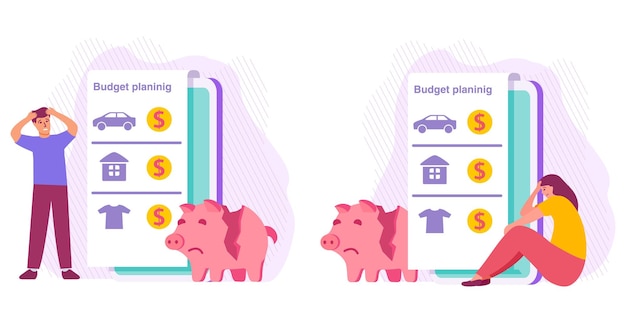Maximize Savings: Tax Advantages of Employee Benefits in the US

The Tax Advantages of Employee Benefits: How to Save Money on Healthcare, Retirement, and More are substantial and can significantly reduce your overall tax burden while providing valuable coverage and financial security, from pretax contributions to health savings accounts and dependent care assistance programs.
Navigating the complexities of taxes can be daunting, but leveraging employee benefits can offer significant financial advantages. Understanding the tax advantages of employee benefits: how to save money on healthcare, retirement, and more is crucial for maximizing your savings and financial well-being in the US.
Understanding the Basics of Tax-Advantaged Employee Benefits
Employee benefits are a crucial part of your overall compensation package, and many offer valuable tax advantages. These benefits, when structured correctly, can help you reduce your taxable income, leading to significant savings.
Tax-advantaged benefits work by allowing you to set aside money before taxes are calculated, lowering your overall taxable income for the year. This can result in lower tax bills and more money in your pocket.

Common Types of Tax-Advantaged Benefits
Several types of employee benefits offer tax advantages. Understanding each can help you make informed decisions about which benefits to utilize.
- Healthcare Benefits: Includes health insurance premiums, Flexible Spending Accounts (FSAs), and Health Savings Accounts (HSAs).
- Retirement Plans: Primarily 401(k)s and traditional IRAs, which allow pretax contributions.
- Dependent Care Assistance: Programs that help cover the costs of childcare or eldercare.
- Commuting Benefits: Some employers offer programs that allow you to pay for commuting expenses with pretax dollars.
In summary, tax-advantaged benefits can provide significant tax savings and financial advantages. By carefully considering your choices, you can tailor your benefits package to best suit your financial needs.
Healthcare Benefits and Their Tax Advantages
Healthcare costs can be a significant burden for many families. Fortunately, many employee healthcare benefits offer tax advantages that can help alleviate some of this financial stress.
By taking advantage of these tax-advantaged options, employees can save money on their healthcare expenses while also reducing their overall tax liability.
Health Insurance Premiums
Employer-sponsored health insurance premiums are often paid with pretax dollars. This means the amount you pay for your health insurance is deducted from your gross income before taxes are calculated.
This pretax deduction reduces your taxable income, resulting in lower income taxes. This is one of the most common and straightforward ways to save on taxes through employee benefits.
Flexible Spending Accounts (FSAs)
FSAs allow you to set aside pretax money to pay for eligible healthcare expenses. These expenses can include copays, deductibles, prescriptions, and other medical costs.
The money you contribute to an FSA is not subject to income tax or Social Security and Medicare taxes, providing a triple tax advantage.
Health Savings Accounts (HSAs)
HSAs are similar to FSAs but are available to those enrolled in high-deductible health plans (HDHPs). Contributions to an HSA are tax-deductible, grow tax-free, and can be used for eligible healthcare expenses tax-free.
Unlike FSAs, the money in an HSA can be rolled over from year to year, making it a great option for long-term healthcare savings.
In conclusion, healthcare benefits such as health insurance premiums, FSAs, and HSAs offer significant tax advantages that can help you save money on healthcare expenses and reduce your overall tax burden.
Retirement Plans: Saving for the Future Tax-Efficiently
Retirement planning is essential for long-term financial security, and employee-sponsored retirement plans offer several tax advantages to encourage saving.
These benefits can help you grow your retirement savings more quickly and efficiently while reducing your current tax liability.
401(k) Plans
A 401(k) plan allows employees to contribute a portion of their salary to a retirement account before taxes are calculated. This means contributions are made with pretax dollars, reducing your taxable income.
In addition, investment earnings within the 401(k) grow tax-deferred, meaning you won’t pay taxes on the earnings until you withdraw the money in retirement. Employer matching contributions are also common, providing an additional incentive to save.
Traditional IRAs
Traditional IRAs also offer tax-deductible contributions, similar to 401(k) plans. Contributions to a traditional IRA can be deducted from your taxable income, reducing your tax liability for the year.
Like 401(k)s, earnings in a traditional IRA grow tax-deferred until withdrawal.
Roth 401(k) and Roth IRA
While contributions to a Roth 401(k) or Roth IRA are made with after-tax dollars, the advantage comes in retirement. Qualified withdrawals from these accounts are tax-free.
This can be particularly beneficial if you anticipate being in a higher tax bracket in retirement. Furthermore, Roth IRAs offer more flexibility, as contributions can be withdrawn tax-free and penalty-free at any time.
Employee-sponsored retirement plans offer a tax-efficient way to save for the future, with options to suit various financial situations and preferences. Whether it’s a 401(k), traditional IRA, or Roth account, taking advantage of these benefits can significantly enhance your retirement savings.
Dependent Care Assistance Programs: Tax Breaks for Families
For working parents, childcare and eldercare expenses can be substantial. Dependent care assistance programs (DCAPs) provide a tax-advantaged way to cover these costs.
By participating in a DCAP, you can reduce your taxable income and save money on necessary care expenses.

How DCAPs Work
A DCAP allows employees to set aside pretax money to pay for eligible dependent care expenses. These expenses can include childcare, preschool, before- and after-school care, and eldercare.
The amount you contribute to a DCAP is not subject to income tax or Social Security and Medicare taxes, providing a significant tax advantage. Contribution limits vary each year, so it’s essential to check the current limits.
Eligibility Requirements
To be eligible for a DCAP, you must have qualifying dependents. This typically includes children under the age of 13 or a spouse or other dependent who is physically or mentally incapable of self-care.
- Qualifying Child: A child under age 13 whom you claim as a dependent.
- Spouse or Dependent: A spouse or other dependent who is incapable of self-care.
- Work-Related Expenses: Care must be necessary to enable you (and your spouse, if applicable) to work or look for work.
The care must be necessary to enable you (and your spouse, if applicable) to work or look for work. This means that if you are not working or looking for work, you cannot claim the dependent care expenses.
Benefits
DCAPs provide a valuable tax break for families struggling with childcare or eldercare expenses. By participating in a DCAP, you can reduce your taxable income and save money on necessary care expenses.
- Reduced Taxable Income
- Savings on Childcare Costs
- Savings on Eldercare Costs
In conclusion, dependent care assistance programs offer a valuable tax benefit for working families, helping to offset the often significant costs of childcare and eldercare.
Commuting Benefits: Saving on Transportation Costs
Commuting to and from work can be a significant expense, but some employers offer commuting benefits that allow you to save on transportation costs.
These benefits can reduce your taxable income and make your commute more affordable.
Types of Commuting Benefits
Commuting benefits can include programs that allow you to pay for transit passes or parking expenses with pretax dollars. These programs can take various forms, depending on the employer.
Qualified transportation fringe benefits include transportation in a commuter highway vehicle, transit passes, qualified parking, and qualified bicycle commuting reimbursement.
Tax Advantages of Commuting Benefits
By participating in a qualified transportation plan, you can set aside pretax money to pay for eligible commuting expenses. This reduces your taxable income and saves you money on transportation costs.
The specific tax advantages depend on the type of benefit offered. For example, contributions to a transit pass program are typically exempt from income tax and Social Security and Medicare taxes.
How to Enroll
To enroll in a commuting benefits program, you typically need to contact your employer’s HR department. They can provide information on the available programs and the enrollment process.
Be sure to understand the rules and regulations of the program before enrolling to ensure you are eligible for the benefits. Also, be sure to keep accurate records of your commuting expenses to substantiate your claims.
In conclusion, transportation benefits offer valuable tax advantages that can save you money on commuting expenses. By taking advantage of these benefits, you can reduce your taxable income and make your commute more affordable.
Maximizing Your Employee Benefits for Tax Savings
To fully leverage the tax advantages of employee benefits, it’s essential to understand your options and make informed decisions about which benefits to utilize.
Careful planning and consideration can help you maximize your savings and financial well-being.
Evaluate Your Needs
Start by evaluating your individual and family needs. Consider your healthcare expenses, retirement goals, and dependent care needs.
Knowing your needs will help you determine which benefits are most important to you and which ones will provide the greatest tax advantages.
Review Your Employer’s Offerings
Review your employer’s benefits package carefully. Understand the different options available and the associated costs and tax advantages.
- Healthcare Options: Compare different health insurance plans, FSAs, and HSAs.
- Retirement Plans: Understand the details of your employer’s 401(k) plan and other retirement savings options.
- Dependent Care: Evaluate your eligibility for a dependent care assistance program.
Consider attending benefits enrollment meetings or seeking advice from a financial advisor to help you make informed decisions.
Coordinate with Your Financial Plan
Integrate your employee benefits into your overall financial plan. Consider your income, expenses, and long-term financial goals.
Make sure your benefit choices align with your financial plan and help you achieve your financial objectives.
Stay Informed About Changes
Stay informed about changes to tax laws and employee benefits regulations. These changes can impact the tax advantages of your benefits.
Be sure to review your benefits each year during open enrollment and make any necessary adjustments to ensure you are maximizing your tax savings.
By carefully evaluating your needs, reviewing your employer’s offerings, coordinating with your financial plan, and staying informed about changes, you can maximize your employee benefits for tax savings and financial well-being.
| Key Point | Brief Description |
|---|---|
| 💰 Pretax Contributions | Reduces your taxable income, resulting in lower taxes. |
| 🩺 Healthcare Savings | FSAs and HSAs offer tax-free savings for medical expenses. |
| 👶 Dependent Care | DCAPs provide pretax savings for childcare and eldercare costs. |
| 🚌 Commuting Benefits | Save on transportations to work. |
Frequently Asked Questions (FAQ)
▼
The main tax advantages include pretax contributions that lower taxable income, tax-free growth of retirement savings, and tax-free spending on eligible healthcare and dependent care expenses.
▼
Contributions to a 401(k) are made with pretax dollars, reducing your current taxable income. Earnings grow tax-deferred until retirement, when withdrawals are taxed as income.
▼
An FSA is a flexible spending account, while an HSA is a health savings account. HSAs are exclusive to high-deductible health plans, and the money can be rolled over from year to year.
▼
Commuting benefits, such as transit passes or parking, can be paid with pretax dollars, reducing your taxable income and saving on transportation costs.
▼
Evaluate your needs, review your employer’s offerings, coordinate with your financial plan, and stay informed about changes. This will ensure you’re maximizing your tax savings.
Conclusion
Understanding and utilizing the tax advantages of employee benefits: how to save money on healthcare, retirement, and more can significantly improve your financial well-being. By making informed choices and taking full advantage of the benefits available to you, you can reduce your tax burden and secure a more prosperous future.





